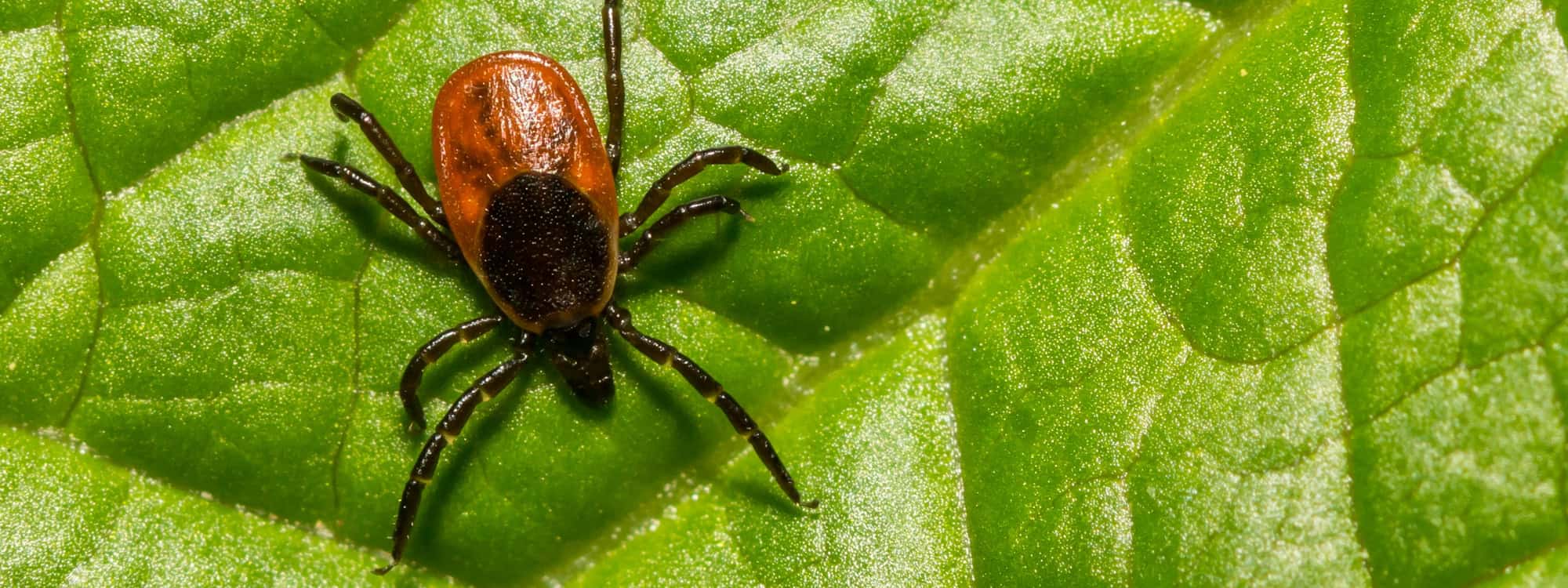Black-legged Ticks
Identification: Black-legged ticks, commonly found in Muskoka, Ontario, are small arachnids that can measure between 1 to 3 mm in length when unfed. They are recognized by their dark reddish-brown bodies and distinct black legs. The ticks’ flattened, oval-shaped bodies become more engorged and rounded when they feed on blood. Their ability to remain inconspicuous makes them challenging to detect until they are fully engorged.
Habitat: In Muskoka, Black-legged ticks thrive in wooded areas, tall grasses, and brushy vegetation. They are frequently encountered in environments with ample cover, such as forests, overgrown lawns, and trails. They are most active during the spring and fall and are often found in leaf litter and undergrowth where they can easily latch onto passing hosts. Their habitat preference for moist and shaded areas helps them stay hydrated and increases their chances of encountering potential hosts.
Diet: Black-legged ticks are obligate blood feeders, meaning they require blood meals to progress through their life stages. They feed on a variety of hosts, including mammals, birds, and reptiles. The tick’s feeding process can take several days, during which it attaches to the host’s skin and feeds on its blood. This feeding behavior is crucial for their development, as it provides the necessary nutrients for molting and reproduction.
Behavior: Black-legged ticks exhibit a behavior known as “questing,” where they climb onto vegetation and extend their legs to latch onto passing hosts. This behavior is particularly prevalent in spring and fall when temperatures are moderate. Ticks are often found waiting in positions that maximize their chances of coming into contact with a host. Their stealthy approach and prolonged feeding time can result in the transmission of diseases, such as Lyme disease and babesiosis. Ticks can be carriers of these pathogens without showing symptoms themselves, making their presence potentially hazardous to both humans and animals.
Prevention: Preventing Black-legged tick encounters involves several strategies. Regularly checking for ticks after spending time outdoors is essential, especially in high-risk areas. Wearing light-colored clothing and using tick repellents containing DEET can reduce the likelihood of ticks attaching. Maintaining a well-groomed yard, keeping grass mowed, and removing leaf litter can decrease tick habitats around your home. Additionally, treating pets with veterinarian-approved tick prevention products can help protect them from tick-borne diseases. Bug Free Muskoka’s Tick & Flea Control Service can enhance these preventive measures with targeted treatments around your yard, reducing the likelihood of ticks entering your space.
Control: Managing Black-legged ticks requires a combination of personal precautions and environmental controls. If ticks are found on pets or people, prompt removal using fine-tipped tweezers is recommended. Treating outdoor areas with acaricides, particularly in tick-prone zones, can help reduce their population. Regularly inspecting and maintaining your yard, as well as using tick-prevention treatments on pets, is crucial for long-term control. By implementing these strategies, you can significantly reduce the risk of tick encounters and protect yourself and your family from tick-borne diseases.
If you have concerns about Black-legged ticks, Bug Free Muskoka offers targeted solutions with their Tick & Flea Service. This service includes a comprehensive treatment plan to create a protective barrier around your home, addressing potential tick habitats and reducing the risk of tick infestations. By focusing on high-risk areas and implementing preventative measures, Bug Free Muskoka helps ensure a safer outdoor environment, providing peace of mind for you and your family throughout the tick season.

